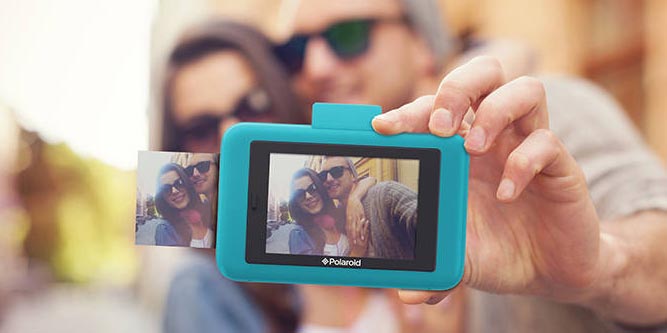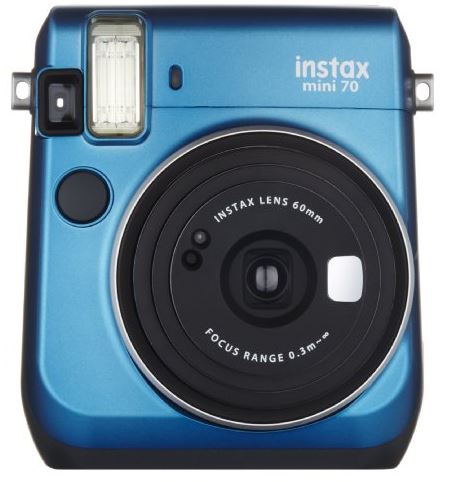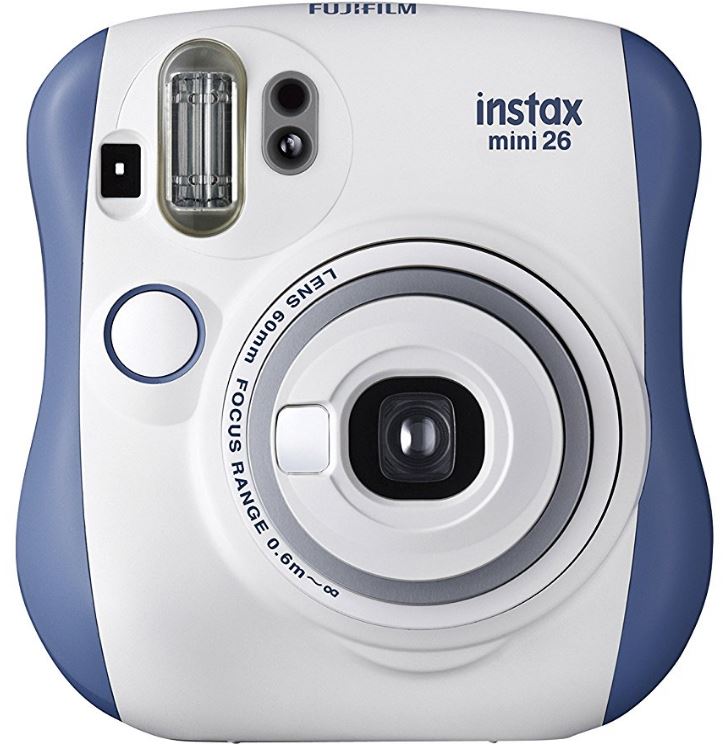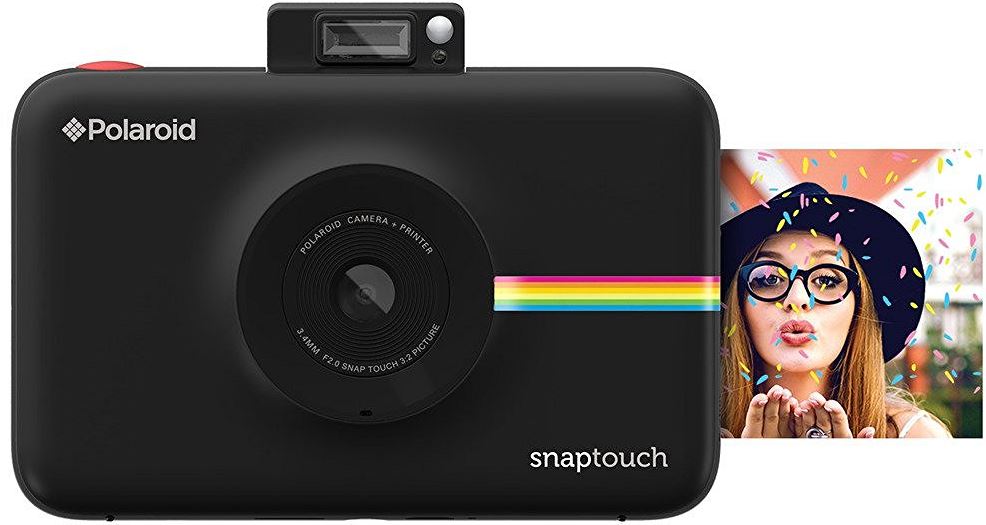Ever since Polaroid introduced the first instant camera, consumers have been in love. When they first hit the market, consumers were blown away by the fact that they could snap a photo and see instant results. Thanks to digital technology, this concept is no longer foreign to us. Our smartphones of today have taken the basics of film photography and added in a ton of great features such as filtering, editing, and automated correction.
But despite all we’ve gained, many people feel as if we’ve also lost something. Even the very first instant print photo was tangible. You could hold it in your hand and share it with everyone who was a part of that moment. You could stick it on your wall as a fond reminder of that moment that you decided to capture. Sure, you can always email the photos from your smartphone to a print shop, but where is the fun in that? With an instant print camera, you’ve got everything you need in the palm of your hand.
But just how different are the instant cameras of today from the ones of yesteryear? Let’s take a look at the three most popular instant print cameras on the market for 2017. With some luck, we just might find the one that’s right for you.
FujiFilm Instax Mini 70
Having been in the camera industry since 1934, the one thing we’re sure of is the Fuji knows cameras. Although they had a bit of a downswing in the 90s, the company has had a bit of a resurgence lately with their high quality digital imaging hardware. But today, they’re going back to basics with their bestselling instant print camera.
Design
Fujifilm is clearly taking some design cues from the classic instant print cameras with their Instax line. The FujiFilm Instax Mini 70 almost looks as if it’s oriented in portrait mode, with the large lens encasement taking up most of the lower half. Above it, you’ll find the rangefinder (a forgotten relic in most modern cameras), the logo, and the upright flash. The entire case is made from a metal alloy, and is available in several perky colors. The blue, red, and yellow models are our personal favorites, but you can also pick up a red, white, black, or tan camera if that’s more your style. Having six fun colors to choose from is more choice than most manufacturers offer.
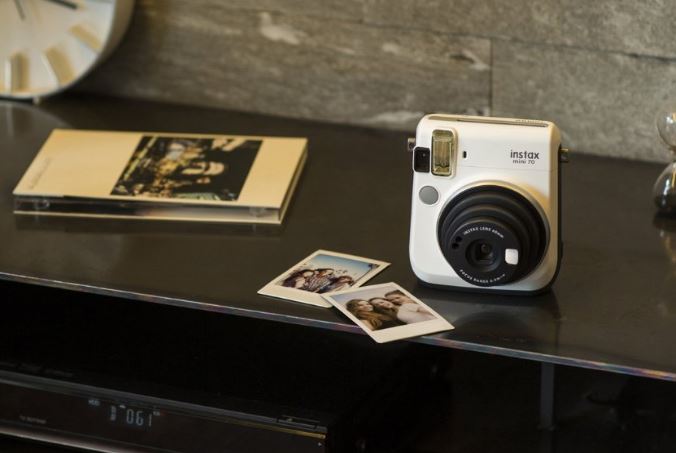
Layout
The camera is surprisingly compact, and fits comfortably in the hand. It measures 4.5 x 3.9 x 2.1 inches, much smaller than the instant cameras of the past. Despite the shape being much different than we’re used to, using it feels natural. The shutter button is placed in the same spot your pointer finger naturally rests. When you need to change the settings, you’ll find that the buttons are all conveniently laid out along the back side. If you’re unsure of how the camera is currently set up, a simple LCD display gives you all the information you need to know at a glance. But there is no need to think it, the camera is as simple to operate as it is in design.
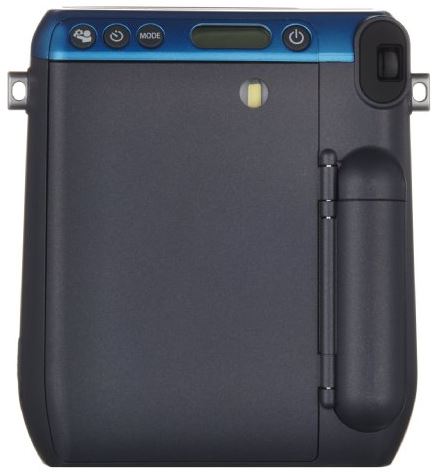
Usability
The Instax Mini 70 is almost completely automatic by design. You can take it out of the box, slap some film in it, and hit the shutter button to create a perfectly exposed image. That being said, there are always a few situations where using a camera isn’t so easy. Fujifilm made sure that there was a specific camera mode that would address each of those situations, each of which are assigned to a button along the back of the camera. Selfie mode tells the camera to use a close focus distance.
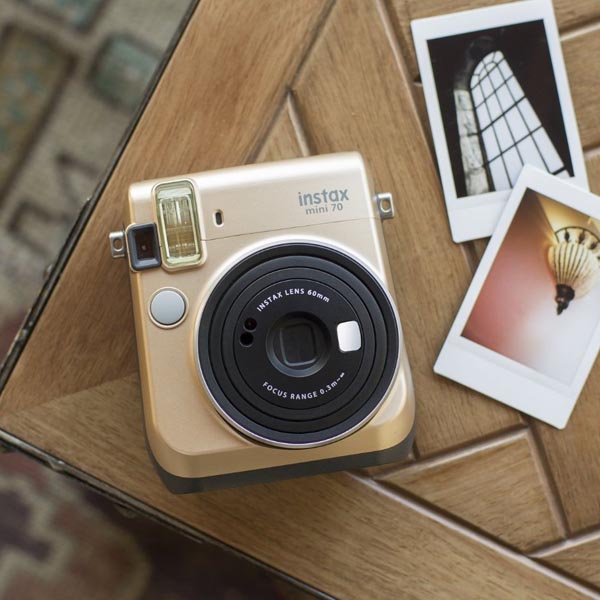
This means that your face will be in focus instead of the background behind you. The timer can bet set for either two seconds or ten. This is useful if you want to hold the camera in such a way that you won’t be able to manually depress the shutter. You can press the button, position the camera, and wait for the shot to be taken. Finally, there is a “mode” button that lets you cycle through the remaining options. Macro is for ultra-close shots, landscape for far away shots, manual flash mode, and finally Hi-Key. Hi-key increases the exposure by a few notches, ideal for indoor shots.
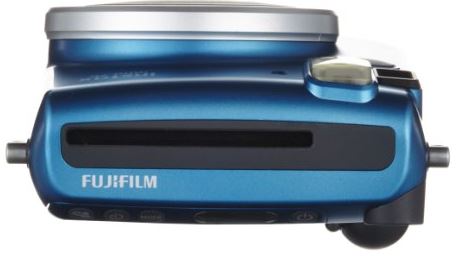
Image Quality
Image quality is a little hard to judge on instant cameras. Technically, they’re all terrible. They don’t have the resolution or color reproduction that you’d get with a DSLR, or even a consumer grade camera. But that’s to be expected when you’re using technology that’s over 40 years old. People don’t buy these cameras for their technical accuracy. They buy them for the same reason we use Instagram filters. They simply look good.
If you’ve after that chromatic charm that can only be found on film cameras, we can assure you that you’ll find them in droves here. The images are clear, and the colors are concise, but they’ve got a slightly dreamy feel to them. The lower detail isn’t a huge issue, since the photos are quite small. They’re about 4 inches by 2 inches, so they’re more like fun little keepsakes than documentation photos.
FujiFilm Instax Mini 26
Although the Instax 70 is the bestselling instant camera on the market, the Instax 26 is its compact little brother. In many regards, it’s very similar in design. But we’d like to highlight the few key differences to help you understand if this camera is a better choice.
Design
With the FujiFilm Instax Mini 26, the layout is almost identical to the Instax 70, but the cameras enclosure is a little more playful. The sleek aluminum has been traded in for a two-tone plastic enclosure that comes in black, white / blue, pink / white, or gray. The edges are just slightly more rounded, which surprisingly makes the camera easier to hold.

Layout
The one difference between this model and the 70 is the lack of camera modes. Instead, you’ve got a lighten-darken mode that will let you adjust the exposure in small increments.
Usability
In essence, this camera is just the Instax 70 in fulltime auto mode. For 80% of your photographic moments, it will work just as well.
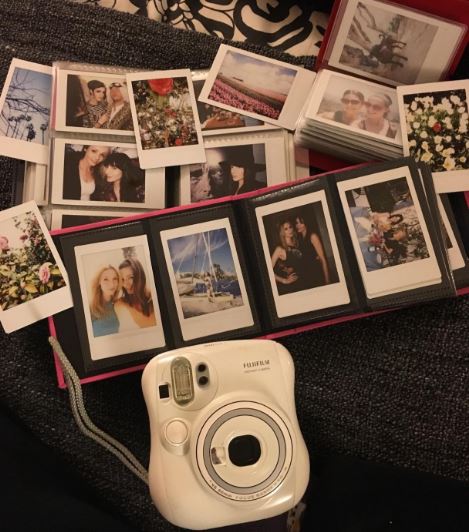
Image Quality
This camera takes the same film as the Instax 70, but you will notice some subtle differences in the image quality. The lens is a little softer, adding to the dreamy look of the images at the expense of detail. The lens is equivalent to a 35mm camera lens. This is considered to be wide angle. For reference, what you see from your eye is the same as a 50mm lens. This makes it great for selfies and landscapes, but not fantastic for close up shots.
Polaroid Snap Touch
We couldn’t write a review on the best instant cameras without mentioning Polaroid. After all, they’re the company that started it all. The Polaroid SnapTouch is the latest model in their Snap line, the product that began the resurgence of instant cameras.
Design
With the Polaroid Snap Touch, the design is simple, fun, and modern, with just a touch of pizzazz. For the most part, the smooth plastic case around the Polaroid looks like any other camera. The face is virtually bare save for the compact lens and the iconic Polaroid stripe. Fortunately, you can still customize your own with six different colors to choose from. Polaroid offers the standard black and white for simplicity sake, but you can also pick one up in baby blue, hot pink, deep purple, or firetruck red. Aside from the bright red button and the large LCD on the rear, the design remains simple. It’s not until you fire it up that you’ll see what this camera has to offer.
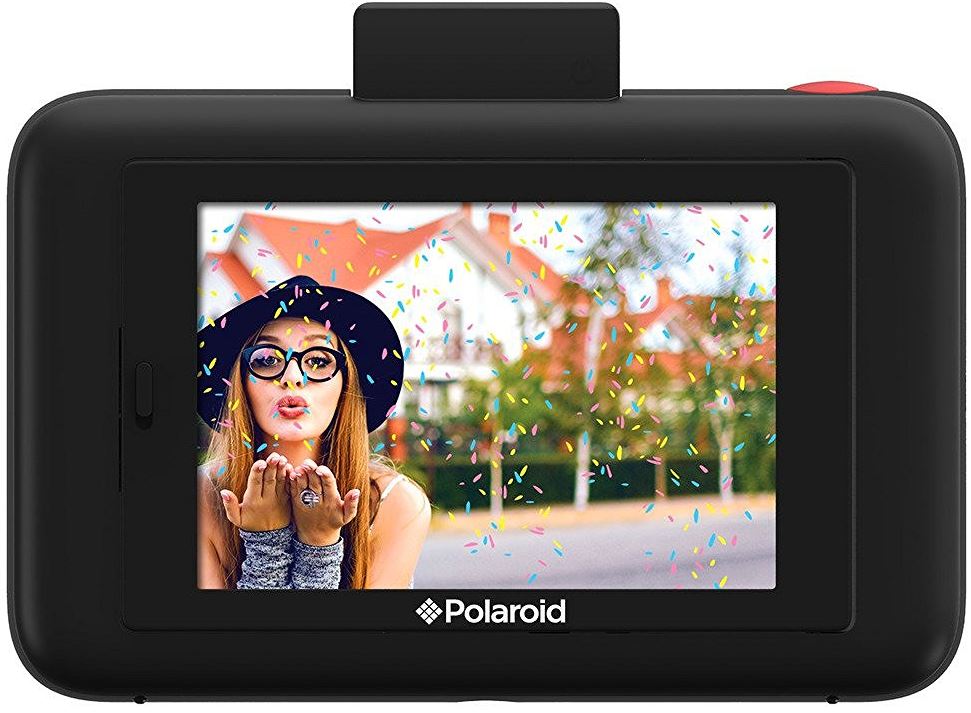
Layout
The nice thing about the snap touch is that it’s operated entirely though the large touchscreen on the back. There is no awkward button layout to fumble around with. Any settings you need to change can be done digitally. This also allowed polaroid to add a ton of great features that are hidden in menus, keeping them out of the way when you don’t need them.
Usability
This is probably the easiest instant camera you can get. All you need to know is how to use the shutter button. Every other part of the process, such as framing your shot, is easy to use when looking at the digital display. Not happy with the look of your photo? Bring up the menu and select from several cool filters. After you take the image, you can also add things like text, borders, emojis, and many more fun after effects.
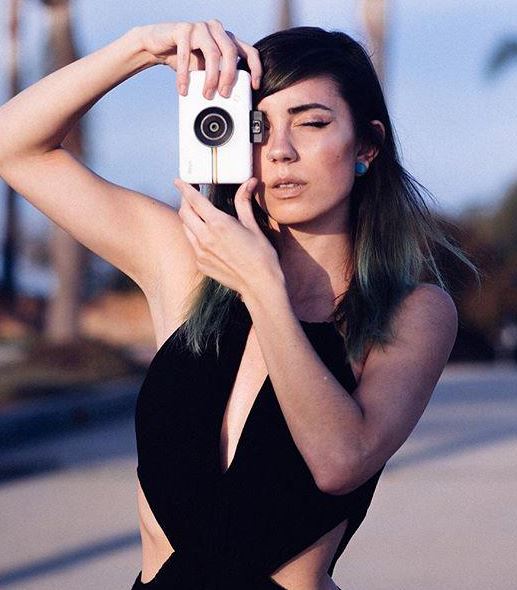
Once you’ve got your shot the way you want, you just tap a single button to print it. The camera has internal storage, so even if you don’t want to use film for every shot you can save it for later.
The great thing about the snap touch is that you can actually connect it to your other devices to take advantage of the printer. One of your friends tag you in a photo from your vacation last weekend? With a quick Bluetooth transaction, you can send the photo to the Snap Touch and print it off to hang with your other great shots.
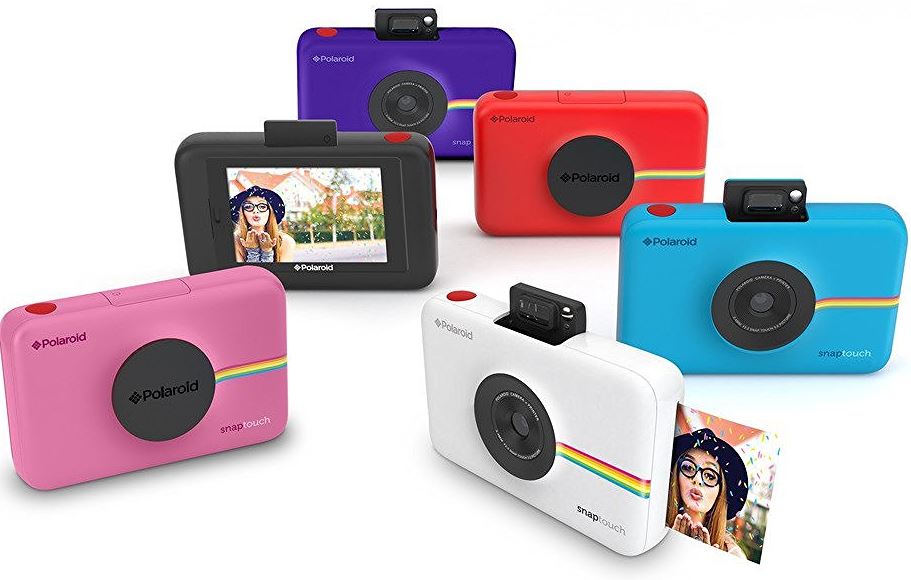
Image Quality
This is one of the areas where the Snap Touch performs best. It’s a fully digital format, so you get all the things you’ve come to expect. Crystal clear images, sharp details, and excellent color reproduction. But if the image isn’t exactly the way you want it, the built in filter swill take care of that for you. They work a lot like Instagram. You can choose form the preset filters, or custom edit all of the fine settings to create the exact composure you’re looking for.
Which Instant Print Camera is Right for Me?
We’re surprised that we’re still having this conversation in 2017, but the question you need to ask yourself is if you prefer film or digital.
If you’re after that classic Polaroid look, then there is nothing more authentic than film. Fujifilms instant cameras create images that have a strong emotional appeal. The stylish images are unlike anything you can recreate digitally. For regular users, the Fujifilm Instax Mini 70 is a great buy. It’s got separate shot controls that allow this simple camera to perform well in situations that instant cameras generally fail. But if you’re a casual user, the Instax Mini 26 has much of the same features for a very affordable price.
If you’re not too concerned with the authentic film look, the Polaroid Snap Touch might be a good option. It’s digital image sensor is a little more crisp and clear. They also give you the chance to review and edit the photos, helping you to create your own unique style before you decide if you want to use a print on the image, or just save it to your SD card. As you know, the printer is the one thing that separates the Snap Touch from other digital cameras on the market. Fortunately, you can connect your mobile devices wirelessly to the Snap Touch and print any photo you like!
Meet Derek, “TechGuru,” a 34-year-old technology enthusiast with a deep passion for tech innovations. With extensive experience, he specializes in gaming hardware and software, and has expertise in gadgets, custom PCs, and audio.
Besides writing about tech and reviewing new products, Derek enjoys traveling, hiking, and photography. Committed to keeping up with the latest industry trends, he aims to guide readers in making informed tech decisions.

